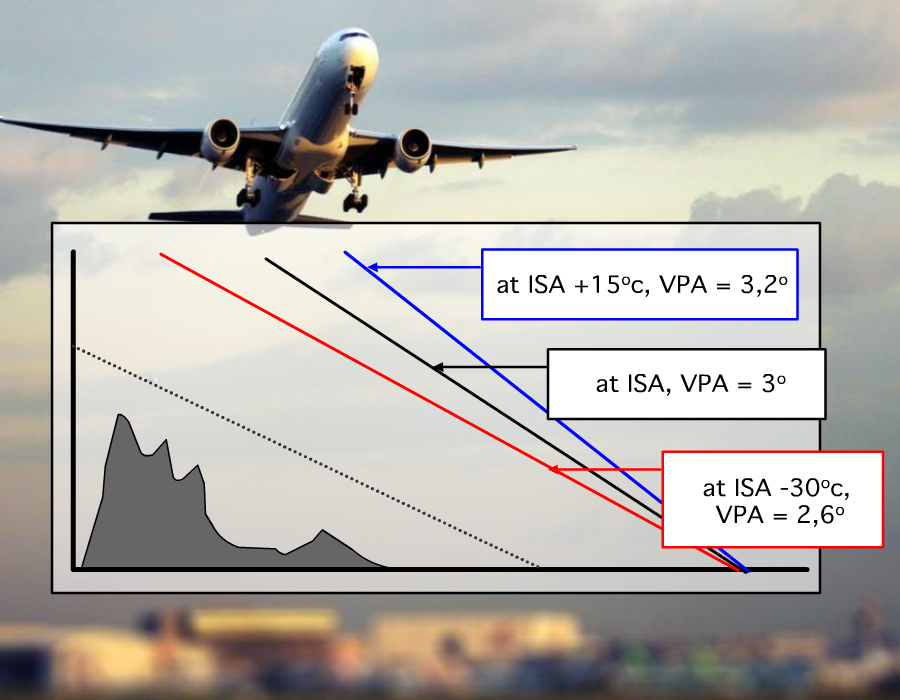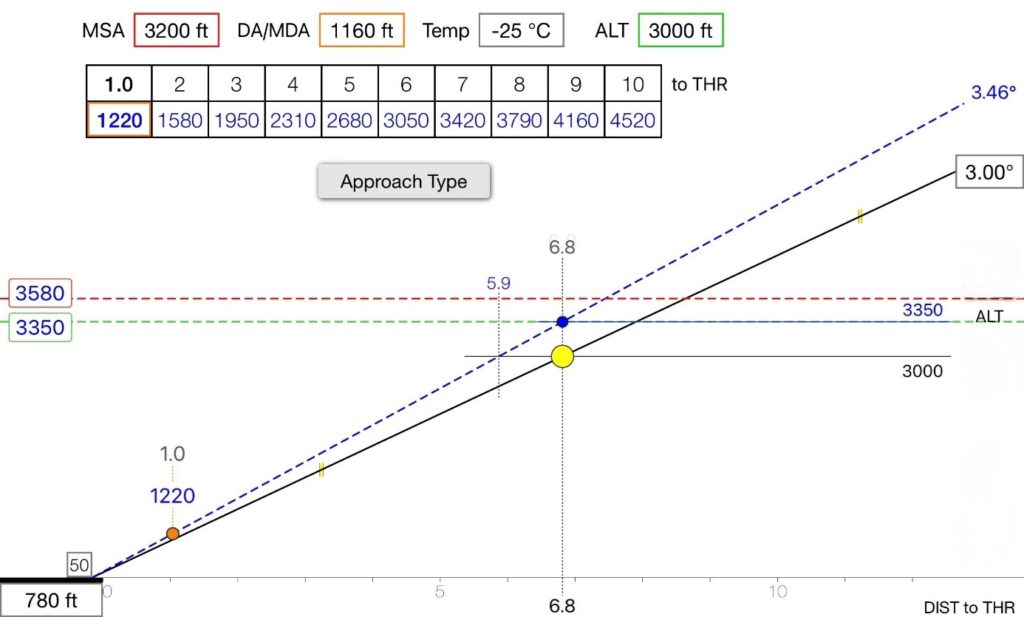COLD TEMPERATURE COMPENSATION
Baro instruments are calibrated using the International Standard Atmosphere (ISA) model. The effects on measured altitude of a significantly colder vertical temperature laps, colder than ISA, can be dangerous when not accounted for.

- For RNP APCH operations to LNAV/VNAV minima using Baro VNAV:
(A) The flight crew should not commence the approach when the aerodrome temperature is outside the promulgated aerodrome temperature limits for the procedure unless the area navigation system is equipped with approved temperature compensation for the final approach;
(B) When the temperature is within promulgated limits, the flight crew should not make compensation to the altitude at the FAF and DA/H;
(C) Since only the final approach segment is protected by the promulgated aerodrome temperature limits, the flight crew should consider the effect of temperature on terrain and obstacle clearance in other phases of flight.
- For RNP APCH operations to LNAV minima:
The flight crew should consider the effect of temperature on terrain and obstacle clearance in all phases of flight, in particular on any step-down fix.
An approximate correction is 4 per cent height increase for every 10°C below standard temperature as measured at the altimeter setting source. This is safe for all altimeter setting source altitudes for temperatures above –15°C.
For colder temperatures, a more accurate correction should be obtained from Table below. This table is calculated for a sea level aerodrome. It is therefore conservative when applied at higher aerodromes.

EXAMPLE LFLL RNP 17L [Baro-VNAV not authorized below -20^C]
- T° = -15°C
Only MSA is corrected (3200ft => 3470ft)
- T° = -25°C Only LNAV is approved (with V/S) All altitudes must be corrected

Source: (EU) 965/2012 AMC2 CAT.OP.MPA.126 – Doc 8168 “PANS-OPS” Volume III


